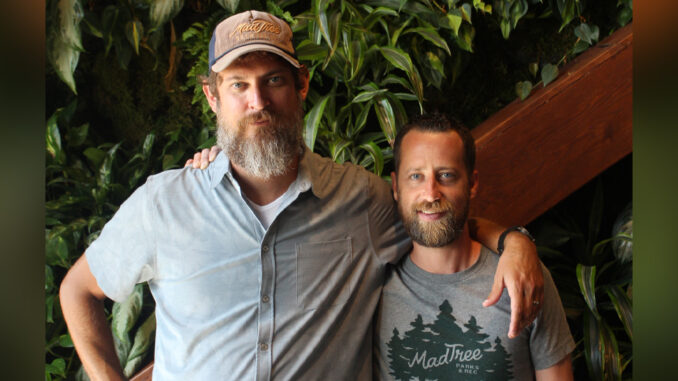
Hospitality at a brewery wasn’t always expected. When MadTree Brewing co-founder Brady Duncan thinks back more than a decade now, he remembers a time when walking into a brewery often meant dim lighting, a dingy room, and service that made customers feel like outsiders. Even the brewery’s first location had its quirks. The beer list was posted 20 feet behind the bar so staff could read it, leaving customers to awkwardly turn around to order.
“That was like, ‘cool,’ at the time,” Duncan said. “But I think we just got to a point where it’s just like, I don’t think consumers want that anymore.”
The Cincinnati brewery, founded in 2013, has spent the past decade shifting from a production-first mindset to one centered on service, a transition that both Duncan and fellow co-founder Kenny McNutt admitted wasn’t immediate. The change accelerated over the past five years as MadTree expanded into three distinct taproom concepts across the city: the Oakley production facility with a sprawling taproom and kitchen, Alcove in Over-the-Rhine with an intimate dining atmosphere, and the newest location, Parks & Rec, a family-focused brewpub that blends outdoor spaces with playful touches like a renovated RV camper for kids and adults alike.
That evolution required a wake-up call. A strategy consultant, who also served on the board of a fine-dining restaurant, once told the owners bluntly that their approach didn’t align with their aspirations.
“She said, ‘You guys say you’re a hospitality company, but you’re not,’” Duncan recalled. “I come in here, and no one greets me. You don’t get me water. When I go to their place, they treat me like royalty.”
For McNutt, the comment underscored a truth they had long felt as customers themselves but had struggled to build into their own culture.
“You go to restaurants and bars and you know what feels good,” he said. “You know when somebody exceeds expectations. We knew it inherently.
“We just didn’t know how to do it right.”
MadTree’s growth pushed the need for change. Opening Alcove in March of 2022 and Parks & Rec in February of 2025 forced the team to rethink what it meant to compete. And not just with other breweries, but with restaurants, entertainment venues and family spaces.
“We’re not competing with those dirty, old kind of dingy breweries anymore,” Duncan said. “People are going out with their families. We’re competing with large spaces all around us.”
That realization sparked a deeper transformation. The brewery declared itself a hospitality company, even changing its IRS registration to reflect the shift. The team eventually recognized the move couldn’t be limited to revenue-generating taprooms.
“Hospitality is not a revenue center,” McNutt said. “Hospitality is a mindset. We’re all in hospitality. Anybody who’s in production, manufacturing, front office, accounting … you’ve got to think that way. Otherwise, we’re not consumer-first.”
The cultural shift was not instant. McNutt said it took years of strategic planning and hiring leaders with true hospitality backgrounds to reshape the company. The onset of the pandemic further accelerated the focus on consumer-first thinking. New products like Sway, a vodka soda developed after seeing customers and even MadTree staff order High Noons at bars, came out of that mindset.
Now, each MadTree location is designed intentionally to fit its neighborhood. The Oakley site evolved alongside its surrounding community. Alcove brings an urban-natural environment into the historic downtown Cincinnati Over-the-Rhine district. Parks & Rec blends beer with recreation, creating a space where parents, kids and friends can gather.
Duncan said that the shift extends beyond the taprooms into every aspect of the business. “We’ve shifted our mindset into a hospitality-first company, and that applies everywhere,” he said. “That’s not just hospitality as it relates to food and beverage. That’s how our sales team treats people. That’s how production treats people. It’s a company-wide culture.”
Good beer alone no longer guarantees loyalty, they pointed out. Service and hospitality define how customers connect to the brand.
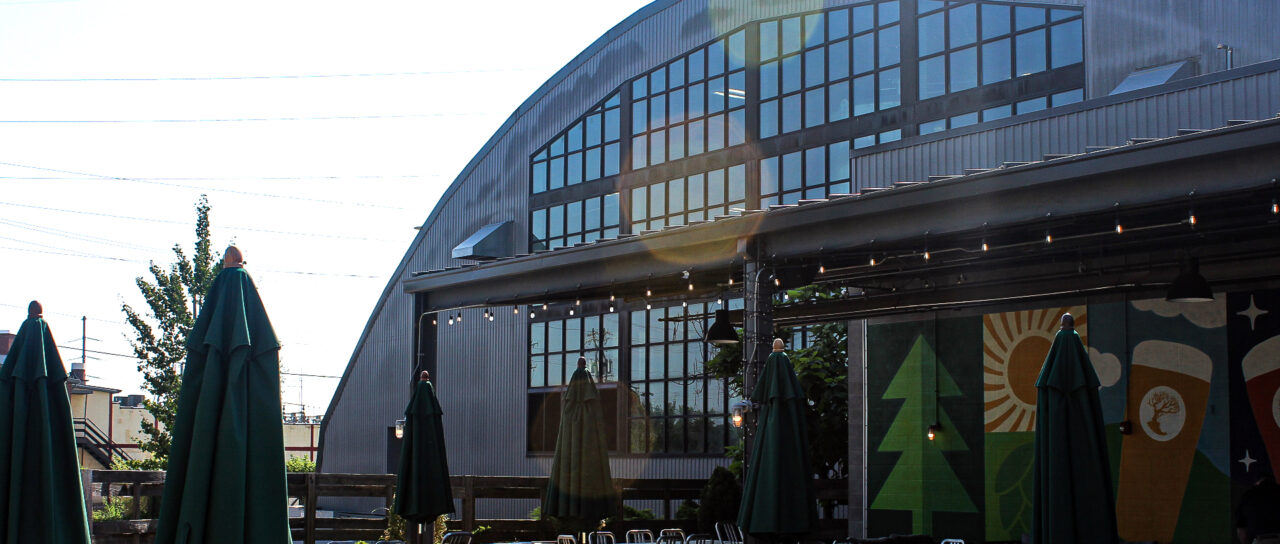
“It was a bunch of small pieces, and then also hiring some really great talent that knows hospitality,” McNutt said. “That kind of kick-started our momentum. And that’s what keeps it going.”
When MadTree opened in 2013, Duncan and McNutt were driven by the beers they loved at the time, which meant big, aggressive, West Coast–inspired IPAs and high-gravity stouts that showcased intensity as much as craftsmanship. The brand’s first lineup was a wall of boldness: nothing under 6% ABV and everything layered with hops. But the Cincinnati marketplace, like the wider craft beer industry, didn’t stand still, and neither could MadTree. That shift to a service mentality has also meant embracing new beverage categories, rethinking brand identity and even adjusting its definition of what “craft” means in practice.
“The first shift was probably the hardest,” McNutt said. “When we put pre-batch cocktails on the menu, it meant we had to pull some beers off. We weren’t running 28-30 beers anymore. Then we added wine, then Sway, and now, eight years later, we’ve got a full bar.
“The mindset changed from ‘we’re a brewery that makes beer’ to ‘we’re a company serving customers.’”
That mentality — customer-first rather than category-first — has carried into MadTree’s larger strategic moves as well. The introduction of the Sway line of canned cocktails coincided with the opening of the Alcove location.
The brand could have easily been spun off as its own standalone brand; instead, Duncan and McNutt chose to keep it tethered to the parent identity. By dropping “Brewing” in certain applications, MadTree allowed itself to speak more broadly to a wider market. The name alone can flex: MadTree Brewing for traditional craft beer drinkers, Sway by MadTree for cocktail seekers, and Alcove by MadTree for dining and hospitality experiences.
It was not always an easy sell internally.
“I’ll tell you what my mindset was,” Duncan said. “I wasn’t always that way. I was reluctant to make a light Lager or even to push Sway at first. We got into this drinking Stone Sublimely Self-Righteous and Sierra Nevada Pale Ale. Our energy was in hopped-up beers. But that’s just not the hill to die on anymore.
“Whatever we make, it has to be high-quality, better than the competition, and it has to help us grow the business.”
That growth now includes catering to an audience that, in the early years, might have been dismissed as “macro drinkers.” Legendary, an American Lager, pushed MadTree into that territory in 2021. The beer has won medals at the World Beer Cup and Great American Beer Festival, but it still meets resistance from some drinkers for the very reason it exists, its approachability.
“I’ll go to parties with a 15-pack of Legendary and hand it to someone, and they’ll say, ‘It’s too much flavor for me,’” Duncan said. “That sucks, but it’s reality. So, I can either tell them their palate sucks, or I can make something that works for them.”
In August of 2025, MadTree announced the release of a new brand, Light Lager. It was created as a calculated step to meet drinkers in the largest beer category in America while continuing to innovate in its smaller craft-focused niches.
For Duncan and McNutt, the balance is no longer about being the brewery with the biggest, boldest beers. It’s about maintaining the credibility they’ve built with craft drinkers while extending the MadTree brand to people who may have never considered stepping into a taproom. The transformation has not diluted the company’s identity, but they feel it has broadened it.
MadTree now operates with a functional split personality that works in harmony: a brewery known for creative beers, and a service company that curates a full spectrum of beverage experiences. For a business that once defined itself by hops and ABV, the most important ingredient today is adaptability.
One aspect of the brewery’s ethos that hasn’t had to adapt is the company’s commitment to being as sustainable and environmentally friendly as possible.
McNutt recalls that even in the original business plan, long before the brewery opened its doors, the mission was rooted in being community-focused as well. The early years were filled with the familiar rhythm of small donations to countless nonprofit requests. The gesture was well-meaning, but the impact was scattered.
“You give 50 bucks to this one, $250 to this one, and you do that: rinse and repeat, and then what impact did you have? You didn’t,” McNutt said.
The turning point came when MadTree began concentrating its efforts. The brewery identified four core charities to support, creating a clearer framework. That focus sharpened even further in 2019 when MadTree joined 1% for the Planet, pledging a portion of annual sales directly to environmental causes. The decision tied their financial planning to their mission, making community investment non-negotiable. It also clarified where the dollars would go: helping build Cincinnati’s tree canopy. For a city working toward a 40% canopy goal, MadTree’s contribution of more than 7,000 trees planted in six neighborhoods since 2020 has been a visible marker of progress.
That commitment extends beyond money. Every employee at MadTree is required to volunteer at least 16 hours annually, with four of those hours dedicated to 1% for the Planet initiatives. It’s written into job descriptions, reinforced in annual reviews, and supported by paid time. Collectively, staff members contribute more than 2,000 hours of community service every year. “It’s important,” McNutt said. “We volunteer as a company, and it’s part of who we are.”
For MadTree, pursuing B Corporation certification became the natural next step. The framework provided structure, accountability and a rigorous standard that aligned with the brewery’s growing sense of intentionality. The certification process is demanding, requiring businesses to measure and prove their social and environmental performance. But for MadTree, the transition wasn’t about reinventing its practices. “A lot of breweries realize they’re already doing 90% of this,” McNutt said. “You just need that checklist to push you over the edge.”
Today, MadTree stands as the only B Corp-certified brewery in Ohio and one of just a handful across the United States. McNutt points to intentionality as the driving force.
“Strategy is about saying ‘no’ to a lot of things and focusing on the one or two things you’re going to do really well,” he said.
Since 2020, that sharpened focus has guided not only how MadTree makes beer, but how it measures success as a business.
Beyond those goals, the past five years have really reshaped how MadTree’s owners view the business — much of that has technology serving as the backbone of the company’s transformation.
McNutt said the key is building a system that delivers accurate, trustworthy, real-time data to leadership across the company. Without that, he says, it would be nearly impossible to pivot quickly.
The shift began during the pandemic, when MadTree invested heavily in consolidating its disparate systems into a single data lake. Pulling in information from ERP software, payroll providers, customer satisfaction scores and platforms like Yelp, Resy, and OpenTable, the company now uses Power BI dashboards that every leader in the company can access.
McNutt calls it non-negotiable.
“You have to do this to be successful,” he said. “If it’s not working, we need to know what to change immediately.”
The approach allows the team to track food costs, labor costs and guest counts daily, and to make adjustments before problems compound.
Automations have also helped reduce transactional labor and elevate staff to higher-value work. What once took six to eight hours of manual payroll entry now takes minutes because data flows automatically between systems. Even small details, like making sure every employee gets recognized on their birthday, are streamlined through automation. Reports now generate personalized reminders with contact info and photos so managers can celebrate staff without excuses.
“It sounds simple,” McNutt said, “but if you can’t execute on the little things, you’re going to miss on the big ones.”
Artificial intelligence has entered the mix as well. MadTree encourages employees to use AI as a starting point in nearly every workflow, from drafting internal communications to analyzing customer feedback. Peer review notes for employee evaluations are aggregated and summarized through AI, which helps managers focus on coaching rather than sifting through pages of raw feedback. AI tools also process weekly and monthly guest satisfaction surveys, highlighting whether MadTree is living up to its core brand promises and identifying areas of opportunity.
McNutt is quick to add that none of this is about outsourcing decision-making. Leaders still validate data and refine messaging. But the time saved on aggregation and analysis creates space for better decision-making and more flexibility. For a company that once measured success by barrels produced, the move toward real-time adaptability reflects their service-first mentality.
“Technology doesn’t replace culture, but it can reinforce it,” McNutt said. “When leaders have access to the same reliable information, it builds accountability and creates room for continuous improvement.”
For MadTree, that shift has been crucial to sustaining growth in an industry where agility and hospitality increasingly define success.
The company has steadily shifted its focus beyond just beer production, placing increasing emphasis on creating venues that cater to the diverse audiences of Greater Cincinnati. These spaces represent more than just places to drink beer. They have been created as intentional investments in the community, each designed to feel natural to its neighborhood while drawing in different segments of consumers.
“We want to open more spaces. We think we’re getting pretty decent at it,” Duncan said. “Parks and Rec would be the latest example. I think we did a really nice job finding a great partner, complementing the neighborhood extremely well. Building a space that just feels natural, relaxed, and has a purpose. It was intentional, very intentional.”
That intentionality shows in how the Blue Ash location balances the needs of families and professionals. Situated near the city’s second-largest business district and adjacent to Summit Park, it attracts corporate happy hours and private events while also welcoming families with indoor and outdoor play areas for children.
“We’ve kind of threaded the needle, that space between families and business happy hours,” Duncan said. “And it actually works, the way the space functions.”
READ MORE: What MadTree’s Owners Have Learned About Leadership & Trust
McNutt added with a laugh that Summit Park’s size feels like “Christopher Robin’s 100-acre wood.” The constant programming of community events at the park has also made the venue more than just a taproom, and it is becoming a hub where different parts of the community intersect.
For MadTree, opening spaces like Parks and Rec is not only about brand expansion but also about anchoring itself more deeply into Cincinnati life. Duncan pointed out that while product innovation like Sway remains essential, physical spaces are where people experience the brand most directly.
“We want to open new spaces, for sure,” he said. “Product innovation has got to keep coming … but we’ve been really smart with our beer business. We’re up 12% in the last 52 weeks in Ohio at a time when craft is declining 7%.”
The co-founders admit that building and running these venues requires a level of operational rigor that many breweries have struggled to master.
“We’ve got to really run like a real business,” Duncan said. “Looking at labor costs, looking at food costs, looking at production costs. For me personally, it’s kind of boring stuff, but it’s exciting at the same time.”
That balance of vision and discipline could prove critical as the industry faces a tough hill to sled.
Duncan noted that while MadTree feels fortunate to be in a strong position, they have seen other breweries falter by not paying attention to financial fundamentals.
“We’ve come to realize this has been a challenging industry for a lot of people, and we’ve had our challenges over the last few years,” he said. “If all of a sudden you’re looking internally and you’re like, man, my food costs or my labor costs are out of control, or how much am I really spending to make my beer? It’s gonna be a tough ride.”
For now, MadTree believes that combining thoughtful venue design with operational discipline offers a sustainable path forward. Each new space is a chance to serve a different audience, deepen roots in the Cincinnati area, and insulate the company against the volatility of the wider craft market.
In Duncan’s words, the company is committed to “building spaces that have a purpose,” which is a philosophy that may keep MadTree relevant long after others fade.



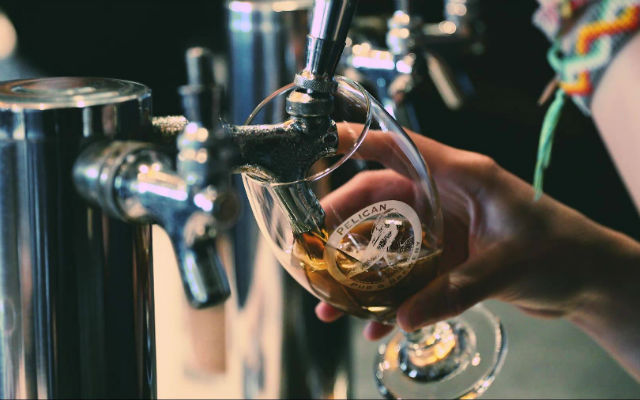
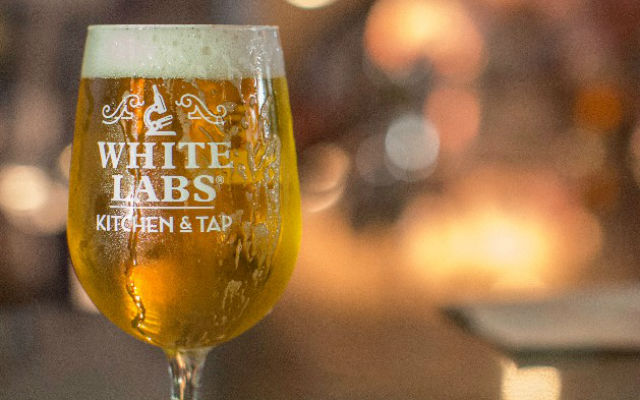
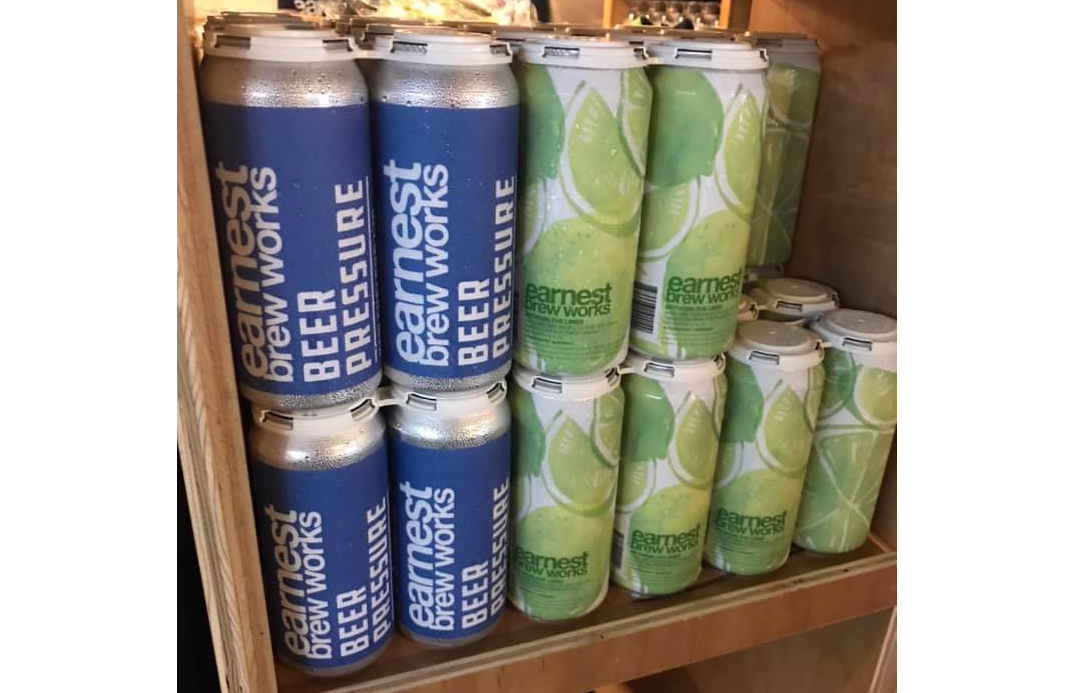
Be the first to comment